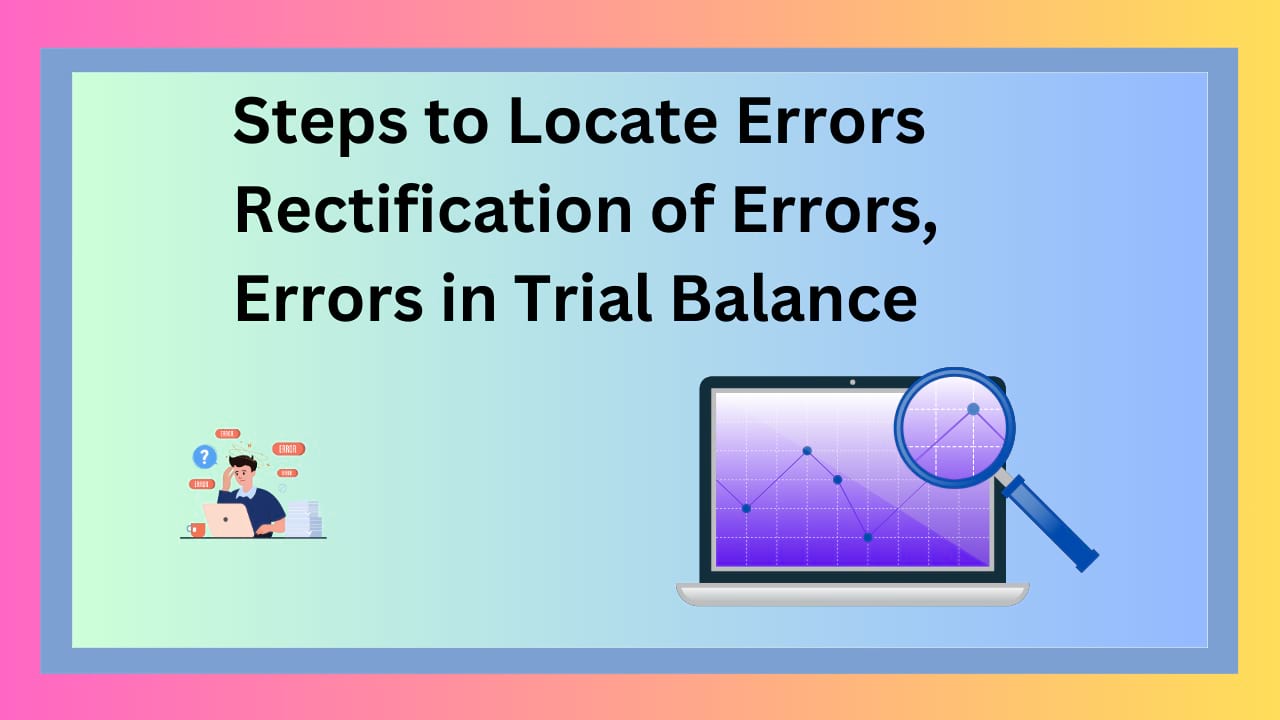Steps to Locate Errors: Even if there is only a very small difference in the trial balance, the errors leading to it must be located and rectified. A small difference may be the result of several errors. The following steps will be useful in locating errors: Whenever there is a difference in the trial balance even by a small amount, the mistakes involved must be located. A small amount may be the net result of several mistakes and it is not safe to ignore a difference in trial balance however small it may be. The following steps are suggested to find errors: Must Check Going Concern Concept.
Quick Links
Steps to Locate Errors
The two columns of the trial balance should be totaled again. If in place of several accounts, only one amount has been written in the trial balance the list of such accounts should be checked and totaled again. The list of Trade receivables is the example from which the Trade receivable balance is derived.
(i) Total the debit and credit columns of the trial balance again. If one amount has been shown for a group of accounts (for example, in place of all customers individually, only one amount against “Sundry Debtors” may be shown), recheck the total of the list of such accounts.
(ii) See that the balances of all accounts including the cash, and bank balances have been written in the trial balance.
(iii) See that there is no mistake in the balancing of the various accounts.
(iv) Find out the exact difference in the trial balance. Look for such accounts that show the same amount. The balance of the particular account may have been omitted from the trial balance. Accounts showing a balance equal to half the difference should also be checked; the amount may have been written on the wrong side of the trial balance. Must Check What is Net Salary?
(v) Recheck the totals of the subsidiary books.
(vi) If the difference is a large one, compare the figures with the trial balance of the corresponding date of the previous year. Any account showing a rather large difference over the figures of the corresponding trial balance of the previous year should be rechecked.
(vii) Posting of all the amounts corresponding to the difference or half the difference should be checked.
(viii) If the difference is still not traced, the posting of the accounts will have to be checked. For this, it is better, first of all, to check the posting of the totals of subsidiary books such as sales books, purchases books returns books, etc. The subsidiary books should then be gone through to see if any items have not been posted. It should also be checked whether the various accounts have been opened with correct balances. Nominal accounts should be checked first, then real accounts, and then personal accounts should be taken up.
If there is still a difference in the trial balance, a complete check will be necessary. The posting of all the entries including the opening entry should be checked. It may be better to begin with the nominal accounts. Must Read How to Finalize Balance Sheet.
Rectification of Errors:
Errors should never be corrected by overwriting. If immediately after making an entry it is clear that an error has been committed, it may be corrected by neatly crossing out the wrong entry and making the correct entry. If however the errors are located after some time, the correction should be made by making another suitable entry, called rectification entry. The rectification of an error depends on at which stage it is detected. An error can be detected at any one of the following stages:
- a) Before preparation of Trial Balance
- b) After Trial Balance but before the final account is drawn.
- c) After final accounts, i.e., in the next accounting period.
Errors Disclosed by Trial Balance:
The following errors are disclosed by Trial balance:
- a) Posting of transactions on the wrong side of the account.
- b) Posting of the transaction on the correct side with the wrong amount.
- c) Errors in totaling.
- d) Error is made in carrying forward.
- e) Wrong balancing in the ledger account.
- f) Posting of one aspect of the Journal entry in the Ledger account.
- g) Recording of one aspect of entry twice.
Recording in subsidiary book and not posted to the concerned amount.







